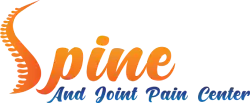Neck and back pain has the ability to sneak in without warning and ruin a perfectly good day. That slight stiffness after work is neck and back pain creeping in silently. Desk jobs, endless scrolling, or wrong pillows can trigger this pain.
If you ignore it, it can be risky. This pain only gets worse when you leave it untreated. You don’t need fancy gear to ease this pain quickly. Minor adjustments at home can effectively ease stubborn neck and back pain quickly.
Common Causes of Neck and Back Pain
If you recognize the trigger, it significantly prevents neck and back pain before it starts. These are the most frequent culprits of that nagging ache:
Poor posture: Slouching over desks or poor sleeping positions vigorously puts strain on the muscles and the spine.
Sedentary lifestyle: If you spend extended periods sitting with little movement, it tightens the muscles and results in stiffness.
Stress and tension: Mental stress manifests physically as discomfort in the neck and back.
Lack of stretching or exercise: Inactivity decreases flexibility, and neck and back pain are more probable.
The identification of these habits is the beginning of lasting relief. Some simple changes are capable of making a big difference in comfort during the day.
How to Minimize Neck and Back Pain at Home
Easy Stretches You Can Do Every Day
Neck rolls and tilts: You have to tilt your head side-to-side and roll it in circles to loosen tension.
Shoulder shrugs: Shrug your shoulders up to your ears, hold for 5 seconds, and relax. Repeat 10 repetitions.
Cat-cow stretch: You can start on hands and knees and alternate arching and rounding your back to loosen your spine.
Child’s pose: Kneel and reach forward, arms out before you. This pose is excellent for releasing tension in the lower back.
Posture Corrective Measures for Daily Practices
Ergonomic positioning: You need to sit on chairs with support, and place screens at eye level.
Sitting/standing tips: Consider having flat feet and relaxed shoulders, and don’t lean forward.
Sleep better: You can sleep on your back or side with a supportive pillow to keep your spine in alignment.
Apply Heat and Cold Therapy
When to use: Ice decreases inflammation (first 24–48 hours). Simultaneously, heat is used to relax tightened muscles afterward.
DIY methods: You can use a warm towel or a bag of frozen peas wrapped in a cloth.
Safety precautions: Consider refraining from direct skin contact and use for 15–20 minutes.
Lifestyle Adjustments That Make a Difference
Be active: You can go for short walks, stretch between work sessions, and try not to sit for long periods.
Weight and hydration: Staying hydrated and within a healthy weight range significantly decreases spinal tension.
Yoga/exercise: Light yoga effectively increases flexibility and relaxes ongoing tension.
Mindfulness: Deep breathing, meditation, and mental relaxation remarkably lower physical tension.
Using these methods, you can effectively alleviate neck and back pain without depending on neck and back pain specialists in Scotch Plains.
When to See a Doctor?
You should not neglect neck and back pain when symptoms intensify or do not resolve after two weeks. Opt for consulting neck and back pain specialists if pain travels down limbs or restricts movement. They can detect underlying conditions such as herniated discs or nerve compression that require special treatment.
Neck and back pain can be reduced with just routine, little daily habits. Gentle habits, improved posture, and simple stretches can make you feel different every day. Do one new habit today and notice the difference in your neck and back pain.

